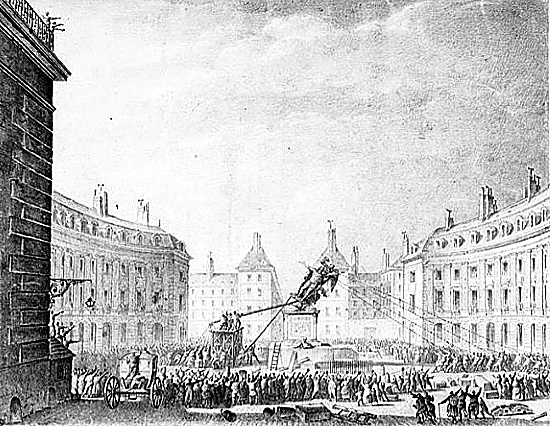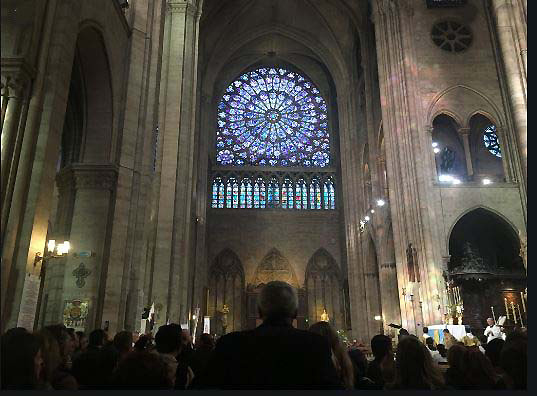MENU: 4.1.2. The milestones' meanings
LOUIS XIV'S CORTEGE HIGHLIGHTS THE MONARCHY'S GROWING STRENGTH BY PASSING IN FRONT OF HIS GRANDFATHER'S AND FATHER'S INNOVATIONS
Henri IV (1585-1610), founder of the Bourbon dynasty, comes to power after a generation of "wars of religion" that, more deeply, pitted anachronistic forces against nascent capitalists. His victory was that of Protestant entrepreneurs and his stronger kingship meant control of them.*
Henri IV Enters Paris on March 24, 1594 by François Gérard / zoom
The ruin in the background recalls the wars' devastation.
His urban inventions highlight power, with the first...
- Straight street (rue de Birague).
- Royal place (place des Vosges).
- Site meant to attract crowds (the pont Neuf bridge).
- Secular statue, of himself on horseback.
The Surrender of La Rochelle, anonymous, 17th century / zoom
He grants the land for a church whose architecture and decor proclaim that obedience to the king is necessary for salvation (first stone, 1626).
# # #
The Doge of Genoa Makes Reparation to Louis XIV on May 15 1685, by Claude-Guy Hallé, 1715 / zoom
- The monumental arches at the Saint-Martin and Saint-Denis gates.
- The complex that culminates with the dome of the Invalides, meant to be his mausoleum (more later).
- The space that begins at the Louvre, morphs with the horizon and is one of the planet's most influential urban designs (more later).
Royal innovations
along the new route
* * *
Next,




























.jpg)














